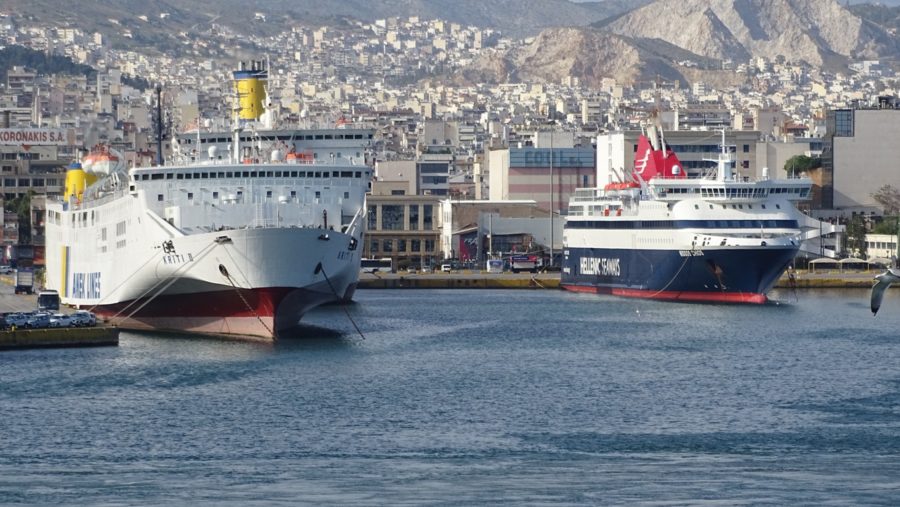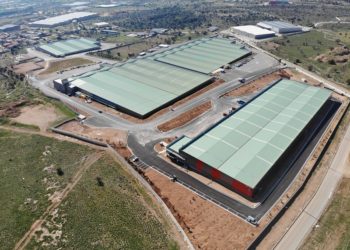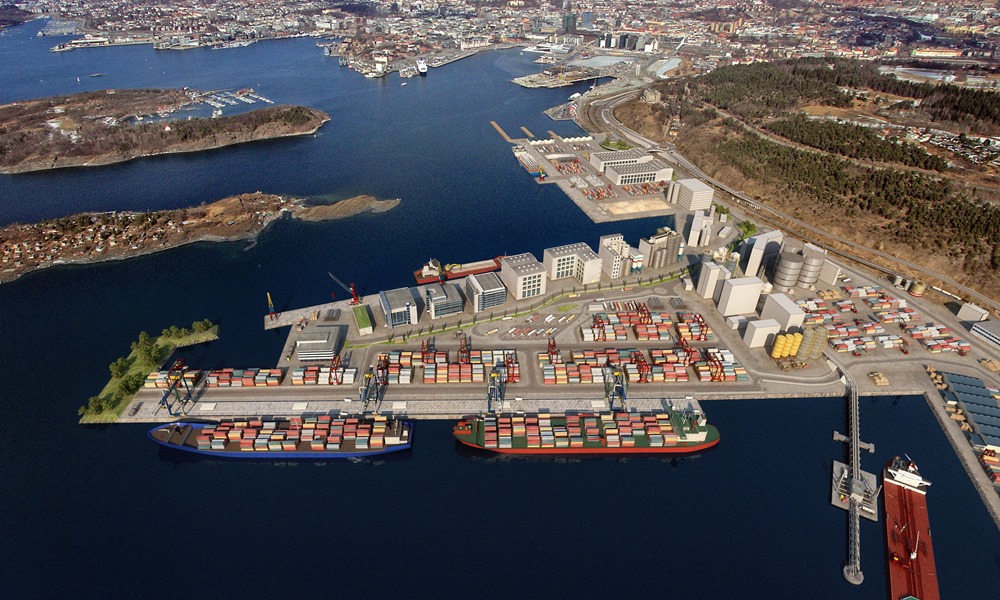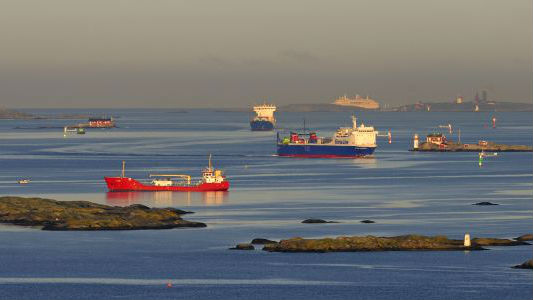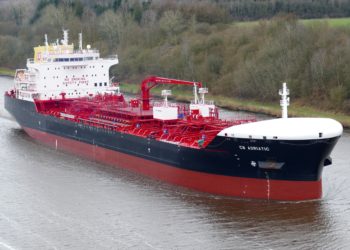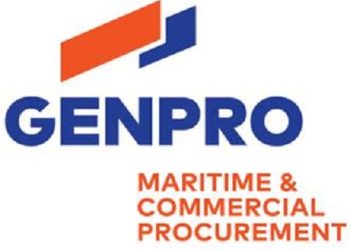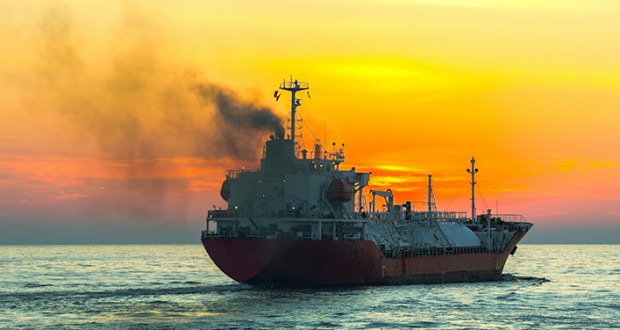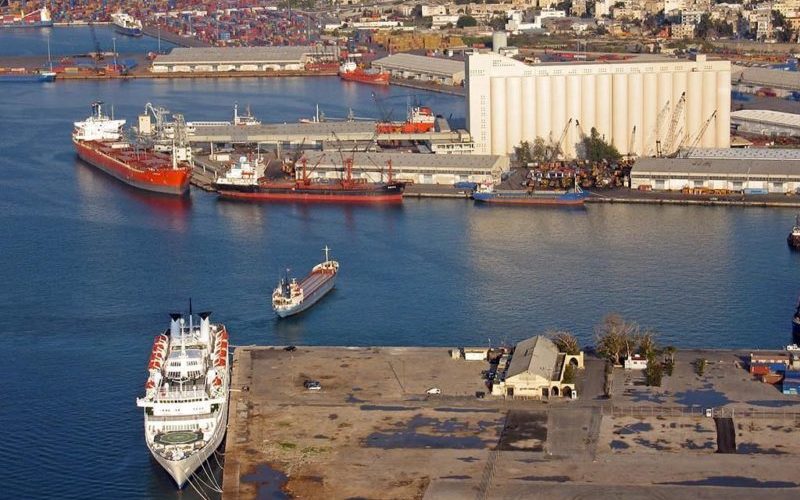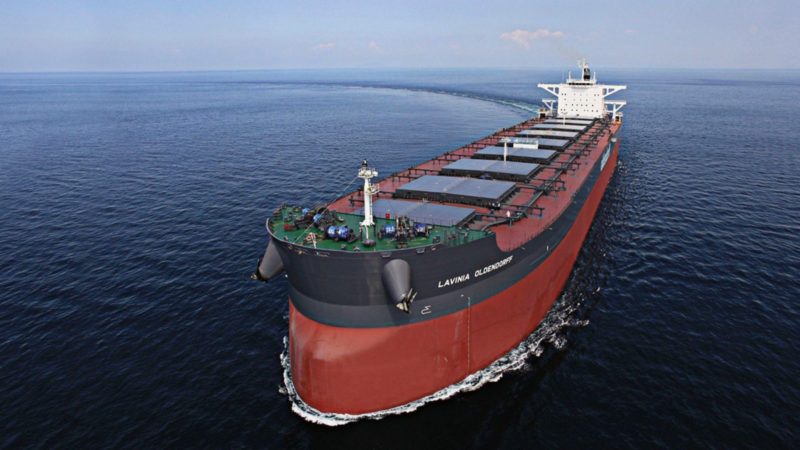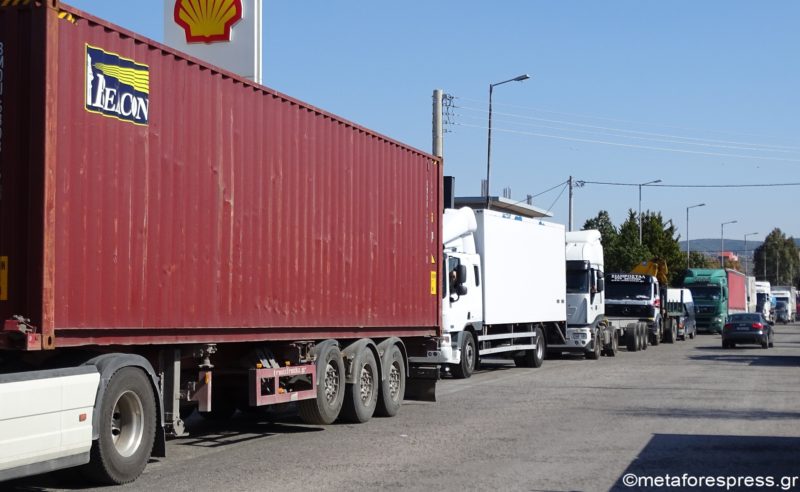Being one of the leading maritime centers in the world, Norwegian Port of Oslo is looking to expand further, meeting at the same time its ambitious targets for reducing greenhouse gas (GHG) emissions.
Clear targets are set for 2030, with an 85% reduction in current GHG emissions, and after that efforts will continue so that Oslo can become a zero-emission port in the long term.
In order to reach its goal of a future zero-emission port, increased sea transport is an important contribution to this green shift. Over the past years, the Port of Oslo recorded a growth in its container volumes, leading to an all-time record in 2018 when the port handled a total of 238,000 TEUs. As the port is growing very rapidly, the port needs to make sure it doesn’t become a bottleneck in this development.
With more lines and more vessels calling in Oslo, the port is going to the south, moving out of the city to expand further.
Currently, the Port of Oslo is finalizing its Master Plan for the South Port, a new cargo port in Sydhavna, Ingvar M. Mathisen, CEO/Port Director, said in an interview with World Maritime News on the sidelines of Nor-Shipping 2019 event.
The overall aim is to make the South Port a large energy ecosystem – to use the energy smarter but also to get smoother logistics between sea and land transport, as explained by Heidi Leander Neilson, Head of Environment at Oslo Port.
Watch the full interview below to learn more about how the port wants to get the area effective with the help of clean fuels and all-electric equipment.
Specifically, the Oslo Port is responsible for around 55,000 tons of CO2 per year. The greatest sources of emissions at the port are foreign ferry routes, followed by shore activities such as cargo handling and transport at the port site and local ferries.
The port has embarked on a number of initiatives that would help it cut its emissions. One of these is a new shore power facility at Vippetangen that opened in January 2019. The transformer contributes to lower climate gas emissions by providing ferries with shore power.
In addition to Color Line ships, ferries operated by DFDS and Stena Line now also get power at the port when at berth.
(World Maritime News)

